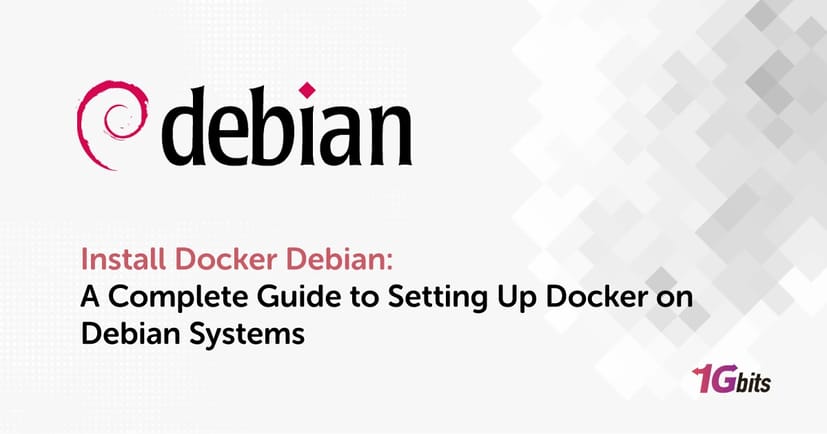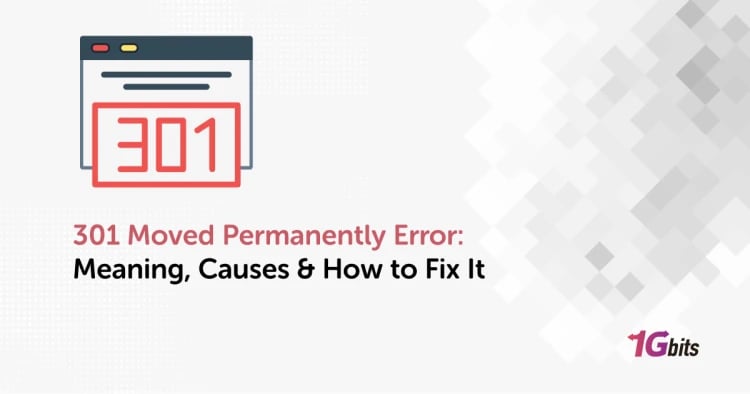Installing Docker on Debian systems is a straightforward yet essential task for developers and system administrators. Whether you need install Docker Debian for managing containers or integrating tools like portainer install docker Debian, ansible install docker debian, or Docker Compose, mastering this process is critical. From install Docker Debian WSL to install Docker Debian ARM64, each setup caters to unique requirements. You might opt for apt install Docker Debian or rely on automated solutions like an install Docker Debian script. Exploring versions like install Docker Debian 10, install Docker Debian 11, or even install Docker Debian bookworm ensures compatibility across systems. If you're working with legacy systems, install docker debian 32 bit or install Docker Compose Debian 9 might be your go-to. Additionally, tools like curl install Docker Debian streamline installations via the command line. For desktop environments, install Docker desktop Debian enables powerful container management with user-friendly interfaces.
Step 1 — Installing Docker
Docker is a versatile platform for developing, shipping, and running applications in containers. This section guides you through Step 1 — Installing Docker on your Debian system, covering various installation scenarios for different Debian distributions and use cases.
Understanding Docker Requirements
Before diving into installing Docker, ensure your system meets the prerequisites. Docker supports multiple versions of Debian, such as install Docker Debian bookworm, install Docker Debian buster, and even legacy versions like install Docker Debian 32-bit. If you’re exploring how to how to install docker debian 11 or earlier, compatibility and system updates are crucial. For installing Ubuntu, read How to install docker on Ubuntu. Also, For Docker Tutorial Source, read Best Docker Tutorial Sources.
Run the following command to update your system packages:
· sudo apt update && sudo apt upgrade
Using apt to Install Docker
For a straightforward installation, Debian provides Docker support through its Advanced Package Tool (APT). The apt install Docker Debian method is simple and effective. Execute these commands to set up Docker from the official repositories:
Add Docker's official GPG key and repository:
· curl -fsSL https://download.docker.com/linux/debian/gpg | sudo gpg --dearmor -o /usr/share/keyrings/docker-archive-keyring.gpg
-
echo "deb [arch=$(dpkg --print-architecture) signed-by=/usr/share/keyrings/docker-archive-keyring.gpg] https://download.docker.com/linux/debian $(lsb_release -cs) stable" | sudo tee /etc/apt/sources.list.d/docker.list > /dev/null
Install Docker with:
· sudo apt update
· sudo apt install docker-ce docker-ce-cli containerd.io
This approach ensures compatibility for install Docker Debian bookworm and install Docker Debian buster.
Automating with Ansible
For users managing multiple systems, install Docker Debian Ansible simplifies deployment. Ansible scripts automate Docker installation and configuration across servers. Here’s an example snippet for your Ansible playbook:
- hosts: all
· become: true
· tasks:
- name: Update APT and install Docker
· apt:
· update_cache: yes
· name: docker-ce
· state: present
Deploy this playbook to automate Installing Docker on various Debian servers.
Docker Installation for Specific Use Cases
-
Install Docker Debian Command Line: install docker debian command line To operate Docker entirely via CLI, stick to the APT or script-based installation.
-
Install Docker Compose Debian 9: install docker compose debian 9 If you're using Debian 9, ensure Docker Compose compatibility by downloading the appropriate binary:
-
sudo curl -L "https://github.com/docker/compose/releases/download/v2.0.0/docker-compose-$(uname -s)-$(uname -m)" -o /usr/local/bin/docker-compose
-
chmod +x /usr/local/bin/docker-compose
-
Install Docker Desktop Debian: For graphical interface users, Docker Desktop can be installed by downloading its Debian package from Docker's official site.
Customizing Docker with Scripts
For advanced setups, using scripts ensures flexibility. A robust install Docker Debian script can incorporate configurations like debian install crontab Docker to schedule tasks efficiently.
In Installing Docker, you’ve learned various methods, from curl install Docker Debian to install Docker Debian compose. These strategies cater to specific Debian versions and user needs, ensuring a seamless Docker setup on your system.
Step 2 — Executing the Docker Command Without Sudo
After completing the installation of Docker, the next step is to configure Docker to run without requiring sudo. This step is essential for improving workflow efficiency, especially if you use commands like Install Docker Debian command line frequently. Let’s break this process into detailed sections for better understanding.
Add Your User to the Docker Group
To enable Docker commands without sudo, you must add your user to the docker group. Run the following commands:
Create the Docker group (if not already created):
· Pseudo groupadd docker
-
Add your user to the docker group:
· sudo usermod -aG docker $USER
-
Apply the changes by logging out and back in:
· newgrp docker
This configuration applies to all supported versions, such as Install Docker Debian 11, Install Docker Debian 12, and beyond.
Verify Docker Without Sudo
After adding your user to the docker group, test the configuration by running a Docker command without sudo:
· docker run hello-world
If the output confirms successful execution, you’ve completed Step 2 — Executing the Docker Command Without Sudo.
Handling Docker Compose
Docker Compose is a vital tool for managing multi-container applications. For users who have installed Install Docker Compose Debian or Install Docker Compose Debian 12, ensuring Compose works without sudo is equally important. Here's how to set it up:
-
Check if Docker Compose is already executable:
· docker-compose --version
-
If not, install it:
· sudo curl -L "https://github.com/docker/compose/releases/download/v2.0.0/docker-compose-$(uname -s)-$(uname -m)" -o /usr/local/bin/docker-compose
· sudo chmod +x /usr/local/bin/docker-compose
Docker Compose now functions seamlessly alongside your Docker installation, ensuring that projects configured during Install Docker Compose Debian work efficiently.
Configuring Docker for macOS and Debian Systems
If you’re managing both macOS and Debian environments, ensuring Docker commands are accessible without sudo remains critical. For example:
-
On macOS, users can install Docker Desktop, which eliminates the need for sudo.
-
On Debian systems, integrating Install Docker Debian Mac setups with Install Docker Debian Command Line configurations ensures consistency across environments.
Troubleshooting Permissions
If you encounter permission errors after completing Step 2 — Executing the Docker Command Without Sudo, try these steps:
-
Recheck group membership:
· groups $USER
-
Restart Docker services:
· sudo systemctl restart docker
-
Verify installations for compatibility, especially for Install Docker Debian 12 or earlier versions.
By completing Executing the Docker Command Without Sudo, you’ve enhanced your Docker experience across Debian versions like Install Docker Debian 11 and Install Docker Debian 12. With the added efficiency of tools like Install Docker Compose Debian, you’re now ready to manage containers seamlessly without superuser interruptions.
Step 3 — Using the Docker Command
Docker commands are the backbone of containerized application management. Whether you're a beginner or an experienced developer, mastering the use of Docker commands can significantly improve your workflow. This guide provides a section-by-section explanation of how to use Docker commands effectively across various scenarios, including container management, image handling, and working with Docker Compose.
Docker commands are versatile and allow you to perform tasks ranging from managing containers to deploying complex applications. If you've completed steps like Install Docker Debian command line, you're now ready to execute commands directly. This section covers foundational commands and how they integrate with systems like Install Docker Debian 12, Install Docker Compose Debian, and beyond.
Running Your First Docker Container
The docker run command is the starting point for working with containers. Here’s an example of running a simple container:
· docker run hello-world
This command pulls the hello-world image from Docker Hub, starts a container, and displays a test message. It verifies that Docker is installed and running correctly on systems such as Install Docker Debian 11 or Install Docker Compose Debian 12.
Managing Docker Containers
To list, stop, or remove containers, use the following commands:
-
List running containers:
docker ps
-
List all containers, including stopped ones:
docker ps -a
-
Stop a running container:
docker stop <container_id>
-
Remove a container:
docker rm <container_id>
These commands work seamlessly across setups like Install Docker Debian Mac or Install Docker Debian command line.
Handling Docker Images
Images are the building blocks of containers. Use these commands to manage Docker images:
-
List available images:
docker images
-
Pull an image from Docker Hub:
docker pull ubuntu:latest
-
Remove an image:
docker rmi <image_id>
If you've installed Install Docker Debian 12 or Install Docker Compose Debian, these commands ensure you can manage the images required for your applications.
Using Docker Compose
For multi-container applications, Docker Compose simplifies the process. After completing Install Docker Compose Debian, you can use the following commands:
-
Start services defined in a docker-compose.yml file:
docker-compose up
-
Stop services:
docker-compose down
-
Check the status of services:
docker-compose ps
Docker Compose enhances the usability of Docker on platforms like Install Docker Debian 12.
Monitoring and Debugging
Docker provides tools for monitoring and debugging containers:
-
View container logs:
docker logs <container_id>
-
Access a running container’s shell:
docker exec -it <container_id> bash
These tools are indispensable for troubleshooting applications, whether you're on Install Docker Debian Mac or another platform.
Cleaning Up Resources
To free up disk space and remove unused resources, use:
· docker system prune
This command removes unused containers, images, and networks.
Using Docker commands efficiently is vital for managing containerized applications. Whether you're working with Install Docker Debian command line, Install Docker Debian 11, or Install Docker Compose Debian, mastering these commands ensures seamless application development and deployment.
Step 4 — Working with Docker Images
Docker images are the foundation of containerized applications. They are lightweight, standalone packages containing everything needed to run software, including code, runtime, libraries, and system tools. Understanding how to manage and use Docker images effectively is critical for working in containerized environments. This section explains the essential aspects of Docker images, breaking them down step by step.
Pulling Docker Images
The docker pull command fetches images from a Docker registry. It is one of the first commands you'll use when working with images. For example:
· docker pull ubuntu:latest
This command downloads the latest Ubuntu image. If you're using Install Docker Debian 11 or Install Docker Compose Debian, ensure you pull images compatible with your system.
You can also specify versions, like so:
· docker pull python:3.10
Listing Docker Images
To see all the images available on your system, use the docker images command:
· docker images
This command displays image names, tags, sizes, and IDs, helping you manage what’s installed, especially after completing setups like Install Docker Debian Mac or Install Docker Compose Debian 12.
Building Docker Images
Docker allows you to create custom images using a Dockerfile. A Dockerfile contains instructions to assemble an image step by step. Here's an example of a simple Dockerfile:
· FROM ubuntu:latest
· RUN apt-get update && apt-get install -y curl
· CMD ["echo", "Hello, Docker!"]
To build an image from this file, use:
· docker build -t my-custom-image .
This command is useful for creating tailored images for specific applications.
Tagging Docker Images
When building or pulling images, you can tag them to manage versions easily. For example:
· docker tag my-custom-image myrepo/myimage:v1.0
This helps in organizing images, especially in projects involving Install Docker Compose Debian.
Pushing Docker Images to a Registry
To share images with others or deploy them on different systems, push them to a Docker registry:
Log in to Docker Hub:
docker login
-
Push the image:
· docker push myrepo/myimage:v1.0
You can also set up private registries for advanced projects.
Removing Docker Images
To free up disk space, remove unused images with:
· docker rmi <image_id>
Use this regularly to clean up unused images on systems like Install Docker Debian 12.
Best Practices for Working with Docker Images
-
Use official or trusted images for better security.
-
Regularly update images to include security patches.
-
Optimize Dockerfile instructions to reduce image size and build time.
-
Working with Docker images is an essential skill for anyone using containerized environments. Whether you're managing images on Install Docker Debian 11, Install Docker Debian Mac, or Install Docker Compose Debian 12, understanding how to pull, build, tag, and push images ensures your applications run efficiently and securely.
Step 5 — Running a Docker Container
Running a Docker container is one of the most fundamental tasks when working with Docker. It allows you to deploy applications in isolated environments for testing, development, or production. This guide provides a step-by-step explanation of how to run Docker containers, including options for customization and use-case scenarios.
Pulling Docker Images
Before running a container, you need an image. Docker images serve as the blueprint for containers. Use the following command to pull an image from Docker Hub:
· docker pull ubuntu:latest
This downloads the latest version of the Ubuntu image. Similarly, you can pull images for web servers, databases, or custom applications.
Running Your First Container
To run a container, use the docker run command. This command creates and starts a container from an image. Here's an example:
· docker run ubuntu:latest echo "Hello, Docker!"
This command:
-
Pulls the ubuntu:latest image if it’s not already on your system.
-
Starts a container and executes the command echo "Hello, Docker!".
-
Stops and removes the container after execution.
If you're using Install Docker Debian 12 or Install Docker Debian Mac, the process is the same.
Running Containers Interactively
For interactive use, such as accessing a terminal within the container, add the -it flag:
· docker run -it ubuntu:latest /bin/bash
This opens a bash shell inside the container, allowing you to interact with the container as if it were a virtual machine.
Running Containers in Detached Mode
To run containers in the background (detached mode), use the -d flag:
· docker run -d nginx:latest
This starts an NGINX web server container in the background. You can use docker ps to check the running container.
Customizing Container Settings
You can customize your container with additional flags:
-
Assign a name to the container:
docker run --name my-container ubuntu:latest
-
Map container ports to the host system:
docker run -d -p 8080:80 nginx:latest
-
Mount a volume for persistent data:
docker run -v /host/path:/container/path ubuntu:latest
These configurations apply to installations like Install Docker Compose Debian or Install Docker Debian 11.
Managing Running Containers
After starting a container, you can manage it with these commands:
-
List running containers:
docker ps
-
Stop a container:
docker stop <container_id>
-
Restart a container:
docker restart <container_id>
These commands ensure smooth operation of containers across all setups, including Install Docker Debian command line.
Viewing Logs and Debugging
To view logs for a running container, use:
· docker logs <container_id>
For debugging or interacting with a running container, use:
· docker exec -it <container_id> /bin/bash
This is especially useful for troubleshooting issues in setups like Install Docker Debian 12.
Cleaning Up After Running Containers
To remove unused containers:
· docker rm <container_id>
To clean up all stopped containers and unused resources:
· docker system prune
Running a Docker container is a straightforward yet powerful process that enables efficient application deployment. Whether you're using Install Docker Debian 12, Install Docker Debian Mac, or Install Docker Compose Debian, mastering container execution lays the foundation for advanced Docker workflows.
Step 6 — Committing Changes in a Container to a Docker Image
Docker allows you to create custom images based on changes made to a running container. This process, known as "committing changes," is particularly useful when you’ve configured a container with specific settings or installed new software and want to save those changes for reuse. This guide explains the concept, the process, and practical applications of committing changes to a Docker image.
Understanding Docker Commit
The docker commit command enables you to capture the current state of a running or stopped container and save it as a new Docker image. This is beneficial in scenarios where:
-
You’ve made manual changes to a container and want to preserve those changes.
-
You want to create a base image for future containers with preconfigured settings.
-
You need to share a custom environment with team members.
For example, after Install Docker Debian 12, if you configure a container with additional tools, committing it saves those changes as a reusable image.
When to Use docker commit
While committing changes directly from a container is a quick way to create custom images, it’s typically suited for specific use cases:
-
Quick Prototyping: When you need to experiment and save configurations quickly without creating a new Dockerfile.
-
Manual Customization: If you’ve made changes manually (e.g., installing software or modifying configuration files) inside a container.
-
Preserving an Environment: Capturing a working environment during testing or debugging for reuse.
For production use, creating or updating a Dockerfile is recommended for better version control and reproducibility.
Syntax of docker commit
The basic syntax for the docker commit command is:
· docker commit [OPTIONS] <container_id> <new_image_name>
Key Options
-
-a, --author: Specify the author of the image.
-
-m, --message: Add a commit message to describe the changes.
-
--change: Apply specific Dockerfile instructions (e.g., CMD or ENV) to the committed image.
Example:
docker commit -a "John Doe" -m "Added Nginx and configured it" <container_id> custom-nginx:latest
Step-by-Step Guide to Commit Changes
Run a Container
Start a container using a base image. For example:
· docker run -it ubuntu:latest /bin/bash
This command starts an Ubuntu container in interactive mode.
Make Changes in the Container
Inside the container, make necessary changes. For example:
-
Update packages:
apt update && apt upgrade -y
-
Install software:
apt install nginx -y
-
Modify configurations or add files:
echo "Welcome to my custom Nginx!" > /var/www/html/index.html
These changes customize the container environment, which can later be committed.
Identify the Container ID
In another terminal, list running containers to get the container ID:
docker ps
Note the container ID or name of the running container.
Commit the Changes
Use the docker commit command to save the changes to a new image:
· docker commit -a "Your Name" -m "Customized Nginx installation" <container_id> custom-nginx:latest
This creates a new image called custom-nginx with the tag latest.
Verify the New Image
List all Docker images to confirm the new image was created:
docker images
You should see your custom image in the list.
Run a Container from the Custom Image
To test the new image, start a container based on it:
docker run -d -p 8080:80 custom-nginx:latest
Visit http://localhost:8080 in a browser to verify the custom Nginx setup.
Best Practices for Committing Changes
-
Use Descriptive Messages: Always include an informative commit message to document the purpose of the changes.
-
Limit Changes: Keep the changes minimal and targeted to ensure the image remains lightweight.
-
Avoid Overwriting Base Images: Create a new image instead of overwriting the original to maintain a clean image hierarchy.
-
Test Before Committing: Ensure all changes are functional and don’t introduce errors.
Advanced Options with docker commit
Adding Metadata
You can add metadata to the new image using the --change option. For example:
· docker commit --change "CMD ['/bin/bash']" <container_id> custom-ubuntu:interactive
This sets the default command to /bin/bash when the image is run.
Automating Commit with Scripts
For frequent changes, automation scripts can simplify the process. For example:
· #!/bin/bash
· container_id=$1
· image_name=$2
· author=$3
· message=$4
· docker commit -a "$author" -m "$message" $container_id $image_name
Save this as commit-container.sh and execute it as:
· ./commit-container.sh <container_id> my-image:latest "Your Name" "Description of changes"
Use Cases of Committing Changes
-
Custom Development Environments: Configure a container with development tools and save it for team-wide use.
-
Preconfigured Software: Install and configure software like databases or web servers, then commit the container as a ready-to-use image.
-
Testing Configurations: Create custom test environments that can be reproduced consistently.
Limitations of docker commit
While docker commit is convenient, it has some drawbacks:
-
Lack of Reproducibility: Changes made manually in a container are not easily documented or reproduced.
-
Untracked History: The changes are not version-controlled, unlike a Dockerfile.
Using docker commit in Real Scenarios
Scenario 1: Capturing Debugging Configurations
Suppose you’re troubleshooting a database container, modifying configuration files to resolve an issue. After resolving the issue, you can commit the container’s state for future use:
· docker commit -m "Debugged and fixed database configuration" <container_id> debugged-db:latest
Committing changes in a container to a Docker image is a powerful feature that enhances Docker's flexibility. While it is ideal for prototyping, manual configuration, and debugging, relying on a Dockerfile is more suitable for production workflows. By following the steps and best practices outlined above, you can effectively use docker commit to save and share custom container states, ensuring seamless workflows across development and deployment environments.
Conclusion
Installing Docker on Debian is a straightforward yet powerful step to unlock containerized application development. Whether you are using Install Docker Debian 12, Install Docker Debian 11, or earlier versions like Install Docker Debian Buster, the process ensures compatibility across systems. With tools like Docker Compose, Docker Desktop, and command-line utilities, Debian users can seamlessly manage containers, build images, and run scalable applications. The flexibility to use scripts, commands like apt install docker Debian, and configuration management tools such as Ansible further simplifies the setup process.
Docker's integration with Debian systems allows developers to customize environments and manage workloads efficiently, whether running a local server or deploying to the cloud. By mastering the installation and usage processes, you’re setting the foundation for streamlined development, enhanced portability, and robust DevOps workflows. Get started today, and experience the benefits of Docker on Debian.












![Debian vs Ubuntu: What's the Differences [Applications & Features] Debian vs Ubuntu: What's the Differences [Applications & Features]](https://1gbits.com/cdn-cgi/image//https://s3.1gbits.com/blog/2021/02/debian-vs-ubuntu-head-to-head-comparison128-750xAuto.jpg)